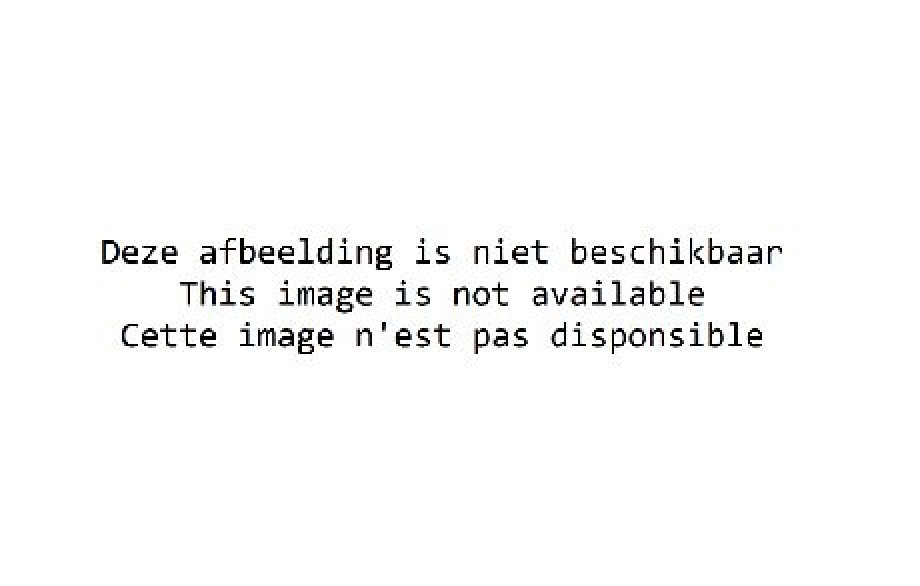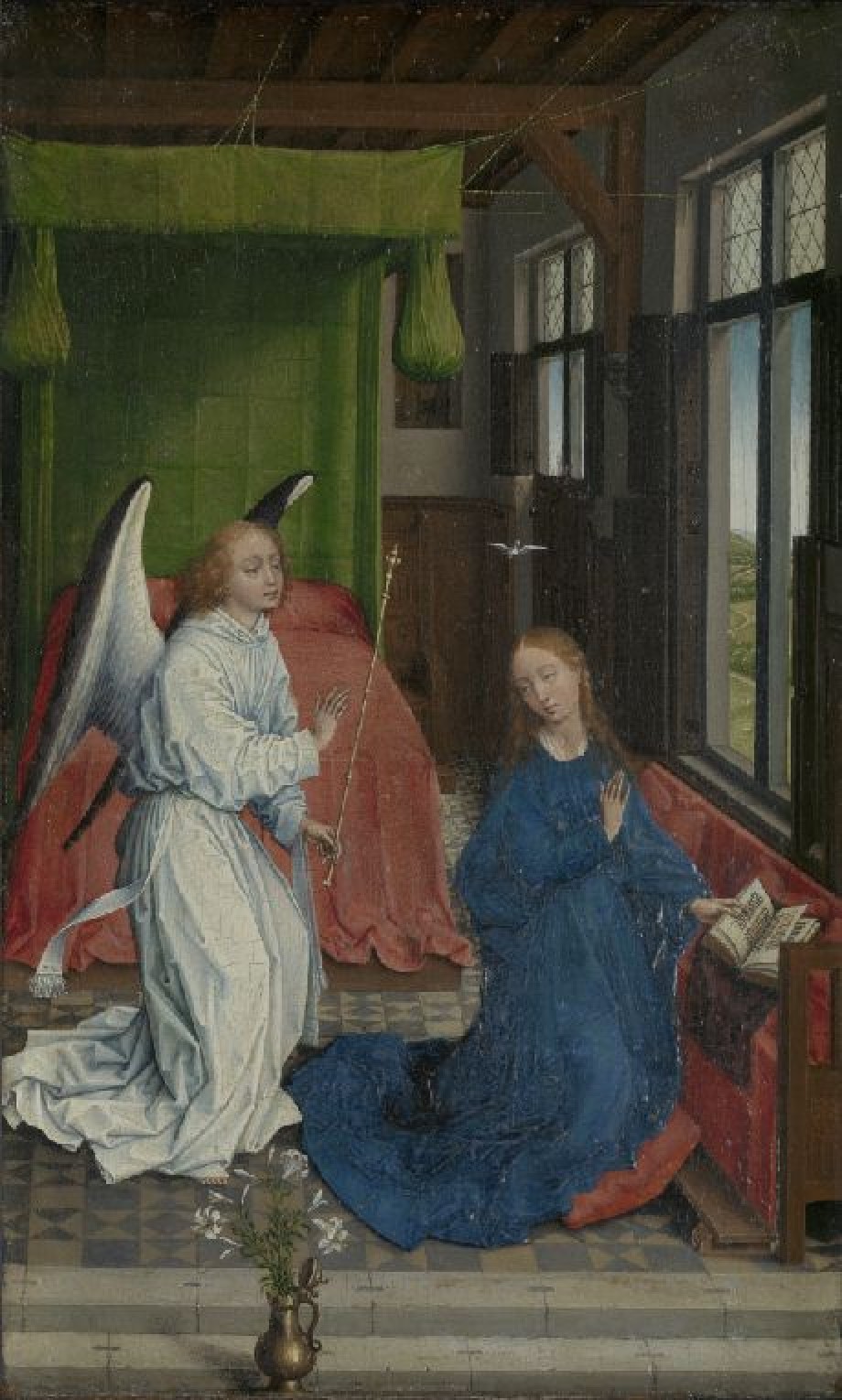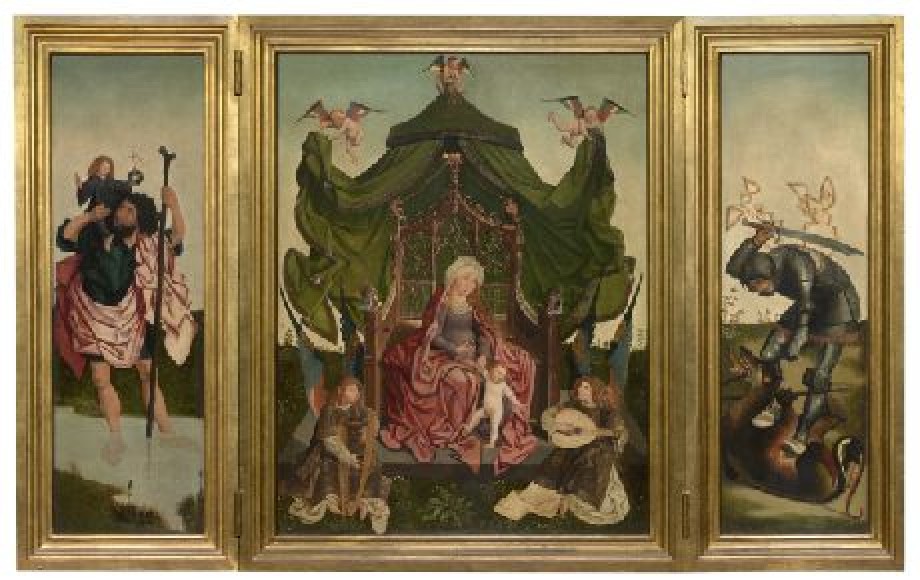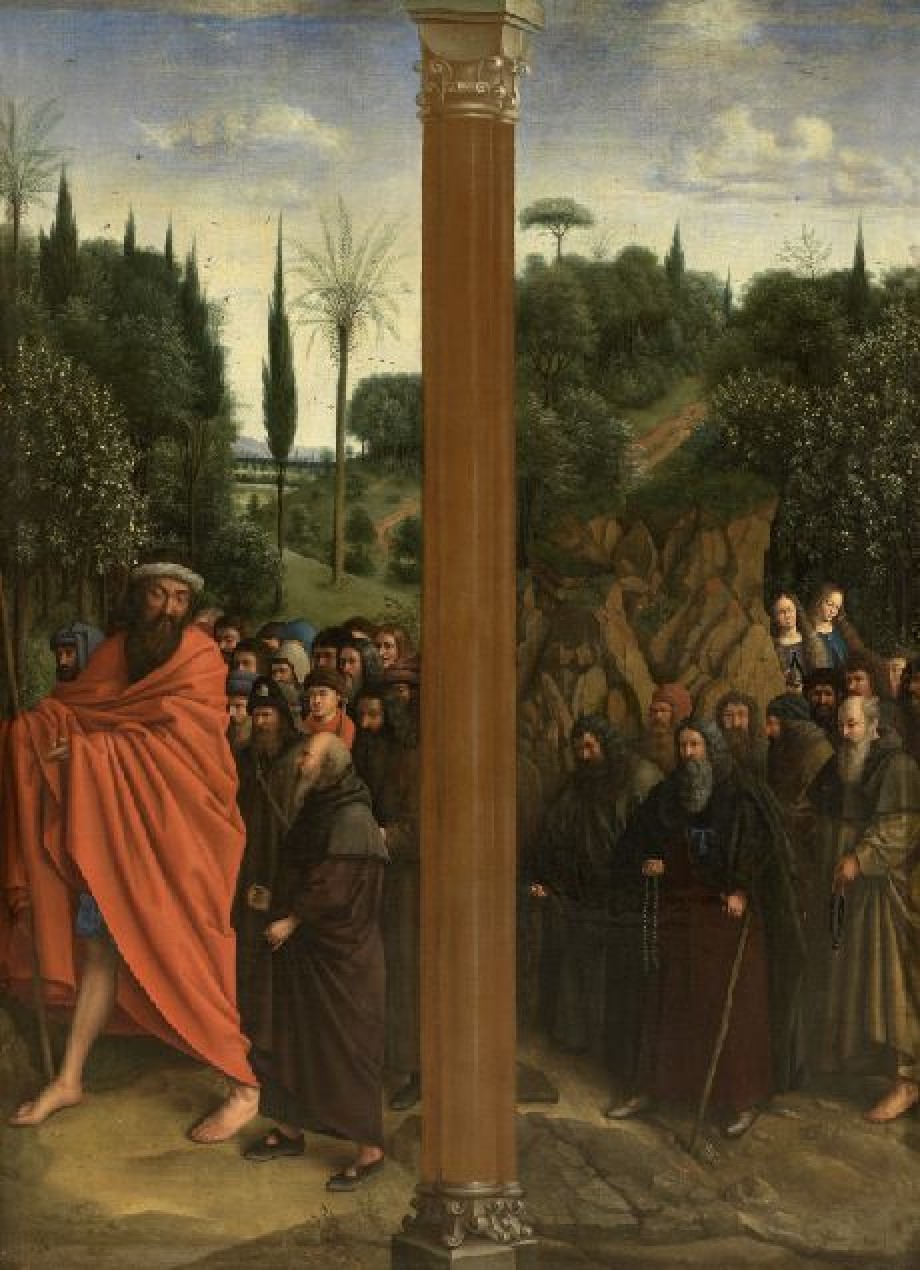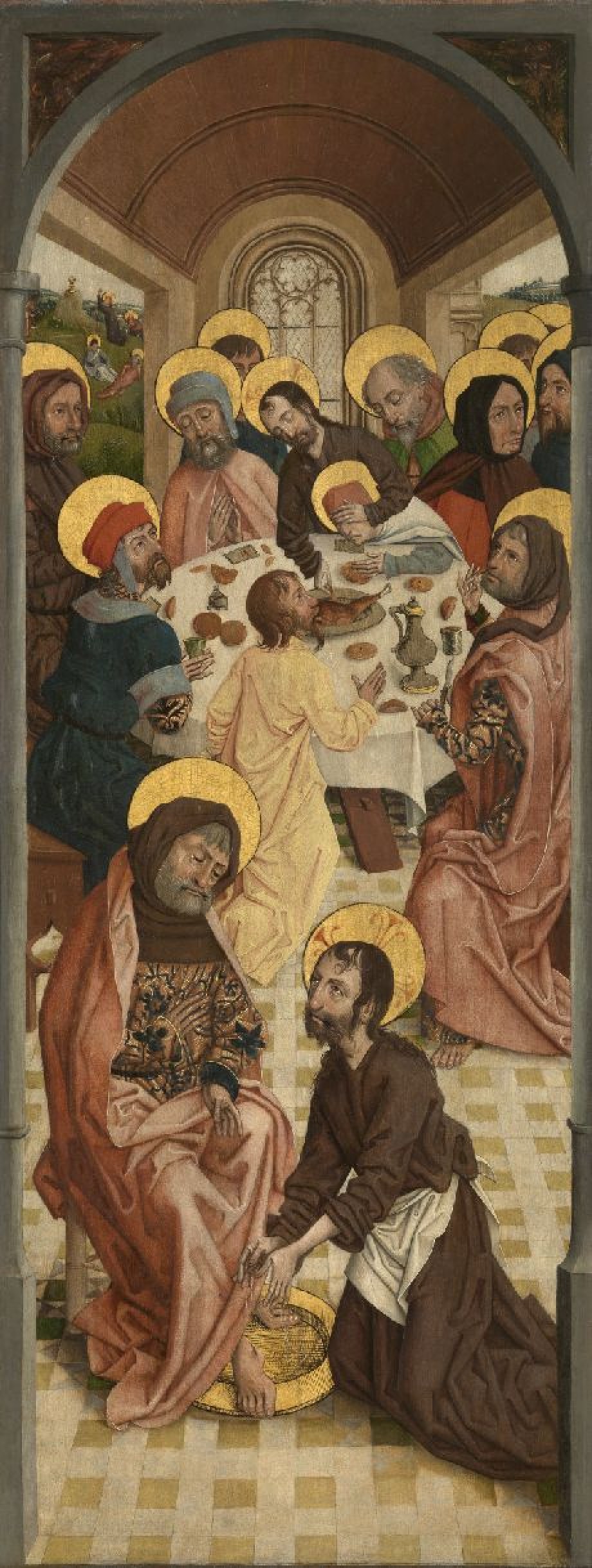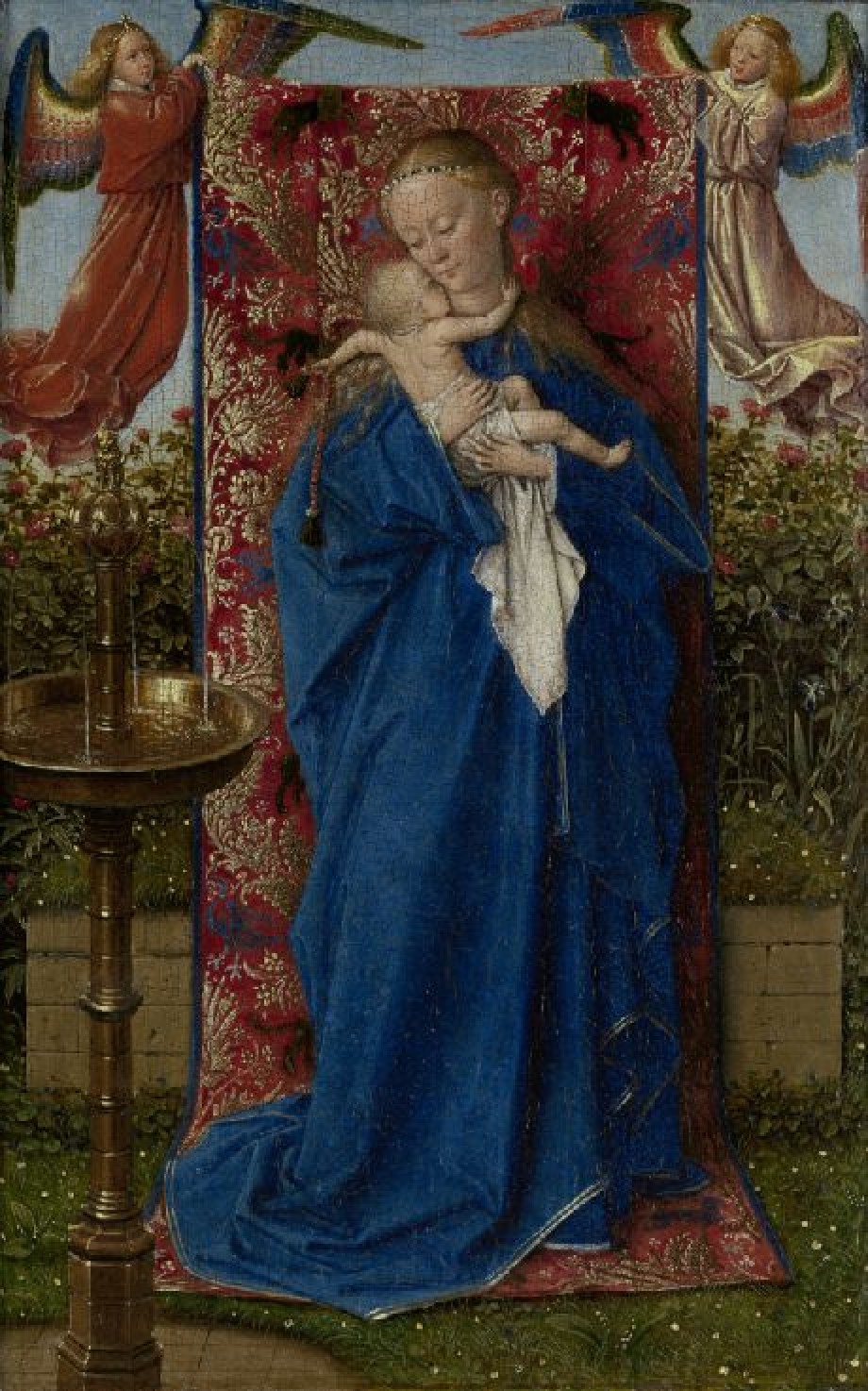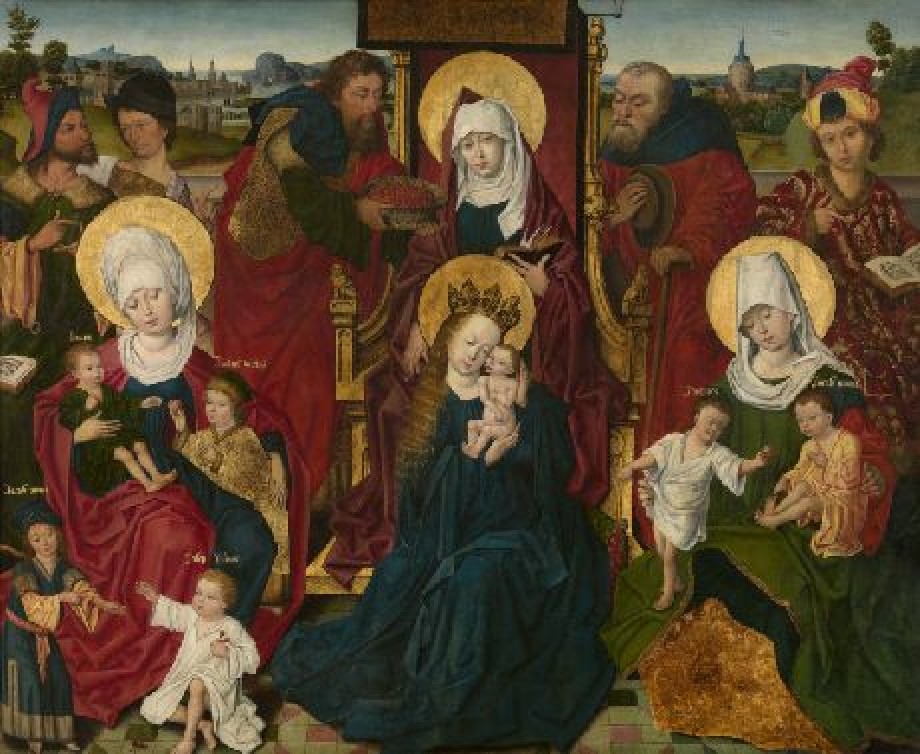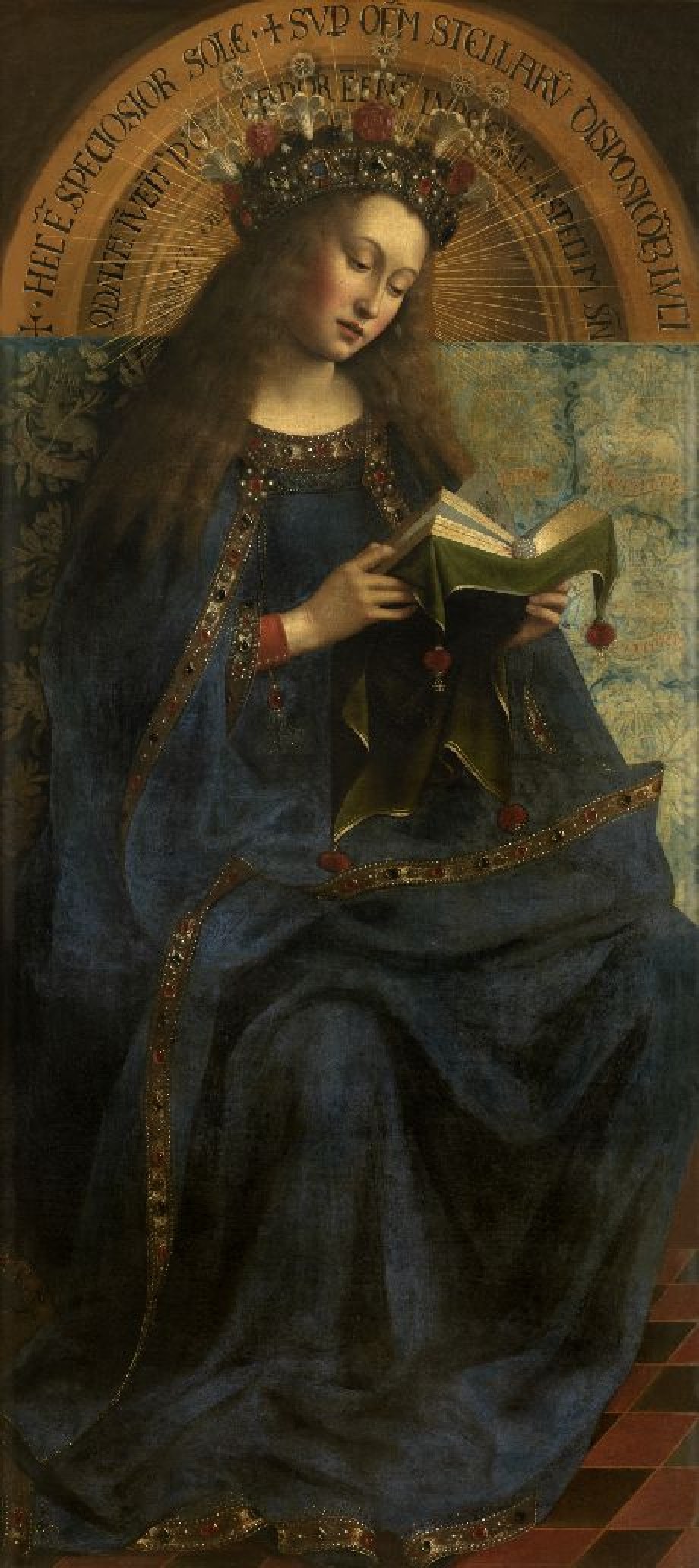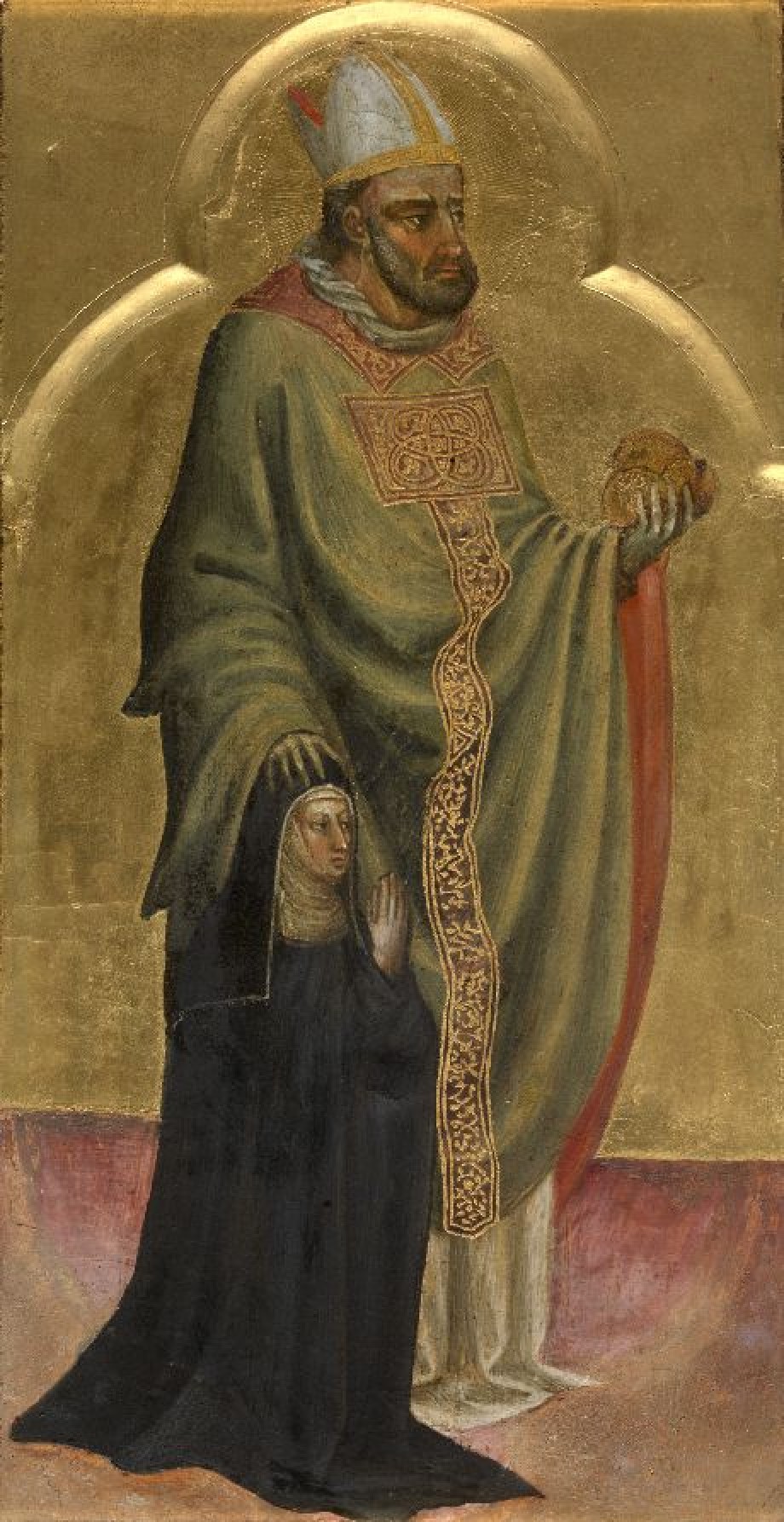The Ordinatio, Marriage and Extreme Unction

Artist / maker
Rogier van der Weyden (painter)Date
(1440-1445)Period
15th centuryCollection
Royal Museum of Fine Arts Antwerp
The painter executed two related scenes in the interior of a Gothic church, looking towards the high altar. The dead Christ hangs from the Cross in the centre, at the foot of which his followers are lamenting bitterly. The figures in this scene are considerably larger than the other people in the church. The smaller figures in the aisles and…
Read more
The painter executed two related scenes in the interior of a Gothic church, looking towards the high altar. The dead Christ hangs from the Cross in the centre, at the foot of which his followers are lamenting bitterly. The figures in this scene are considerably larger than the other people in the church. The smaller figures in the aisles and in front of the high altar are playing parts in the second scene, which illustrates the seven sacraments, the ritual pillars of the Christian faith. Reading from left to right they are Baptism, Confirmation, Confession, Communion, Matrimony, Holy Orders and Extreme Unction. This church is a microcosm bringing together different strata and ranks of society, both richly dressed citizens and the beggars depicted on the right in the centre panel. They are all of different ages.
The angels explain the relationship, between the two scenes. They are carrying banderoles inscribed with Latin paraphrases of ecclesiastical writings that associate each sacrament with the death of Christ (see Inscriptions above). That connection is the most logical with the Eucharist, which is only depicted on the centre panel, for the Mass is the commemoration of the Last Supper that preceded Christ’s death on the Cross. It is during the Eucharist that the consecrated host is transformed into the body of Christ.
Rogier van der Weyden is one of the Flemish Primitives, the name of a group of painters in the Burgundian Netherlands who became famous throughout Europe. They are particularly noted for their depiction of emotions. The people at the foot of the Cross here are prime examples of this, for they have tears rolling down their cheeks, and the Virgin has swooned in sorrow. By painting Christ’s blood dripping from the wounds in his hands, head and side, Van der Weyden is also prompting an emotional reaction from the viewer.
The triptych was commissioned by Jean Chevrot (c. 1395-1460), Bishop of Doornik and president of the Great Council of Burgundy under Philip the Good and Isabella of Portugal. The commission is not documented, but the coats of arms of Chevrot and Doornik are in the top left and right corners of the three panels respectively. Dendrochronological analysis indicates that the triptych was painted after 1440, while art historians date it around 1440-1445 on stylistic grounds. It is not clear which church Chevrot chose for the altarpiece. His private chapel in Doornik Cathedral would have been the obvious choice. Unless, that is, the triptych was to be used to decorate a chapel in the Church of St Hippolytus in Poligny, Chevrot’s birthplace, where there was a cult around a miraculous host.
Chevrot had himself depicted as the bishop carrying out the confirmation ceremony. The technical structure of the work suggests that other people in the church are also based on historical figures, for some of the faces were painted on a pewter sheet that was later attached to the wooden panel. Van der Weyden probably painted those people on location, after which their likenesses were integrated in the large painting back in his workshop. The other portraits have not yet been convincingly identified.
Van der Weyden was at the head of a workshop with assistants to help him. This Seven sacraments altarpiece is also a collaborative work, although Van der Weyden did carry out much of the work himself. The painting was conserved in 2006-2009, when a yellowed layer of vanish was removed and the paint layer was restored to its original condition. Experts then came to the conclusion that Van der Weyden executed the entire centre panel and that he left the architecture and some figures on the wings to two assistants.
Read less
